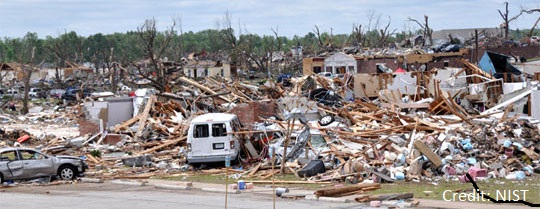Recent floods, tornadoes, and earthquakes remind us that natural, technological, and human-caused hazards take a high toll on communities. Costs in lives, livelihoods and quality of life can be reduced by better managing disaster risks. We can strengthen resilience and improve a community’s ability to maintain and restore vital services in a more timely way and to build back better.
To address this challenge, the National Institute for Standards and Technologies (NIST) manages a multi-faceted program, assisting communities and stakeholders on issues related to buildings and the interdependencies of physical infrastructure systems.
The Community Resilience Program, part of NIST’s broader disaster resilience work, complements efforts by others in the public and private sectors. NIST focuses on research, community planning and guidance, and stakeholder engagement.
Natural, technological, and human-caused hazards take a high toll on communities, but the costs in lives, livelihoods and quality of life can be reduced by better managing disaster risks. Planning and implementing prioritized measures can strengthen resilience and improve a community’s abilities to continue or restore vital services in a more timely way, and to build back better after damaging events. That makes them better prepared for future events and more attractive to businesses and residents alike.
The NIST Community Resilience Planning Guide for Buildings and Infrastructure Systems (Guide) provides a practical and flexible approach to help communities improve their resilience by setting priorities and allocating resources to manage risks for their prevailing hazards. Using the Guide, communities will be able to integrate resilience plans into their economic development, zoning, mitigation, and other local planning activities that impact buildings, public utilities and other infrastructure systems.
The six-step process helps communities to think through and plan for their social and economic needs, their particular hazard risks, and recovery of the build environment by:
- Setting performance goals for vital social functions -healthcare, education and public safety – and supporting buildings and infrastructure systems – transportation, energy, communications, and water and wastewater.
- Recognizing that the community’s social and economic needs and functions should drive goal-setting for how the built environment performs.
- Providing a comprehensive method to align community priorities and resources with resilience goals.
- A fictional community, Riverbend, illustrates the six-step process and how disaster resilience can be integrated into community planning.
The first version of the Guide was released on October 29, 2015, and may be updated periodically as new best practices and research results become available and as communities gain experience using the guide and recommend improvements.
Download Volume 1 of guide (PDF).

